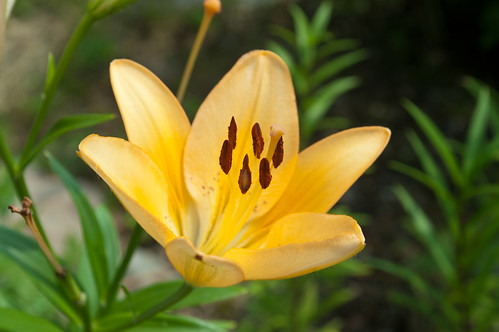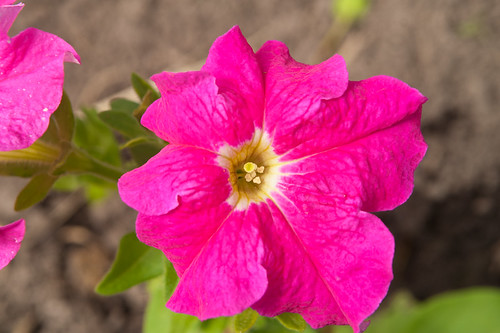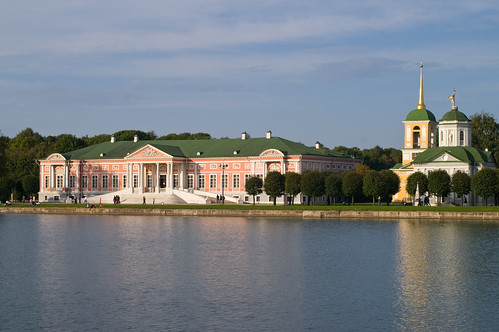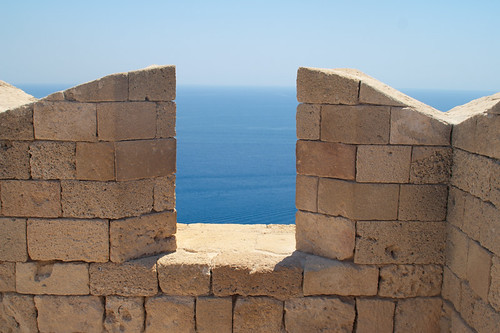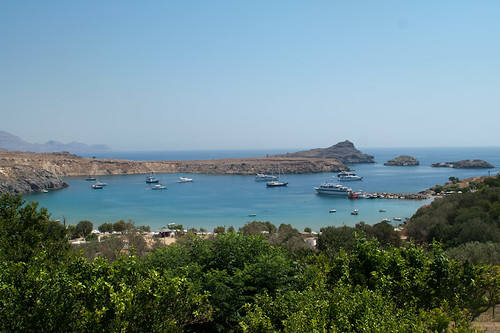Via Flickr:
Grasshopper on campanula leaf * Кузнечик на листе колокольчика
Camera: Konica Minolta DYNAX 7D
Lens: Sigma 24-70mm F2.8 EX DG Macro
View in Lightbox * Посмотреть в лайтбоксе
воскресенье, 30 октября 2011 г.
Grasshopper * Кузнечик
суббота, 29 октября 2011 г.
Lilia from my garden * Лилия из моего сада
Via Flickr:
Lilia * Лилия * Lilie * Lilium * Azucena * Gìglio * lírio * Lis
Lilia from my garden - in Lightbox
July 2011
Лилия из моего сада - посмотреть в Лайтбокс
Июль 2011 г.
Camera: Konica Minolta DYNAX 7D
Lens: Sigma 24-70mm F2.8 EX DG
Exposure: 1/250 sec.
Aperture: F/7.1
Focal Length: 50 mm
ISO Speed: 100
пятница, 28 октября 2011 г.
Blooming petunia * Цветущая петуния
Via Flickr:
Blooming petunia in my garden.
Цветущая петуния в моём саду.
View on black * View on black - LARGE
Petunia * Петуния * Petunie * Petùnia * Petúnia * Pétunia
View on Tumblr
View Pink set in Darckr
Фотографии петунии
Petunia album
суббота, 22 октября 2011 г.
"Клубок шерсти - мой!.." * Wool ball is mine!
Via Flickr:
Макс позирует с клубком красной шерсти.
Max is posing with wool ball.
Камера: Konica Minolta Dynax 7D
Объектив: Sigma 24-70mm F2.8 EX DG
Exposure 1/160 sec.
Aperture f/3.5
Focal Length 70 mm
ISO Speed 400
Flash Off, Did not fire
Exposure Program Aperture-priority AE
вторник, 18 октября 2011 г.
Sedum: still flowering in October! * Очиток: продолжает цвести воктябре! *** BOKEH version

Sedum: still flowering in October! * Очиток: продолжает цвести в октябре! *** BOKEH version, originally uploaded by v.plessky.
Via Flickr:
Sedum, Stonecrop * Очиток * Fetthennen, Mauerpfeffer * Sédum * Vetkruid * Rozchodnik
This shot of sedum is taken today (October 23rd, 2008) in my garden.
I was surprised to see that it is stil flowering, despite it's already end of October!
Heleniums are gone, phloxes are gone as well - but sedum is blooming!
What a nice surprise for this Autumn day!
You should view this photo only LARGE!
View on black * View on black - LARGE
Family: Crassulaceae
Genus: Sedum
Семейство: Толстянковые
Род: Очиток
Kuskovo country house * Усадьба Кусково
Via Flickr:
The Kuskovo Palace * Дворец в Кусково
Kuskovo country house (estate) is located inside Moscow nowdays.
Century ago it was a real country house, located outside Moscow boundaries.
From Wikipedia:
Kuskovo is an extensive estate, or manor, of the Counts Sheremetev originally situated several miles to the east of Moscow but now forming a part of the East District of that city. It is a favourite place of recreation for Muscovites, and one of the few 18th-century suburban residences preserved in the Russian capital.
Kuskovo passed to the Sheremetev family in the 17th century, and was chosen as a summer residence by Boris Petrovich Sheremetev, the premier Russian Field Marshal and Count. The earliest surviving structure is the Saviour church, built in 1737-39 in a Petrine baroque style and formerly decorated with marble statues. The neoclassical bell-tower was added much later, in 1792.
Two curious two-storied structures were erected in Kuskovo during the Elizabethan epoch - the Dutch and Italian houses. They combine elements of the fashionable Rastrelliesque baroque with the ideas of classicism, which started to spread in Europe at that time.
The Kuskovo palace was constructed near one of the ponds in 1769-65 in a fine Neoclassical style. Commissioned by Count Nikolai Petrovich Sheremetev, the structure was apparently designed by a group of his serfs, including Feodor Argunov, Aleksey Mironov, and Grigory Dikushin, although another tradition ascribes it to Charles de Wailly. The palace interiors, as completed in 1779, represent a transitional stage between baroque and neoclassicism. This palace houses the most precious collection of Western porcelain in Eastern Europe, which had been collected by several generations of the Sheremetev family. In 1919 the palace was nationalized, and it was declared the State Museum of Ceramics twenty years later.
Park in Kuskovo.
The French regular park around the palace, with its marble statues and lovely ponds, is probably the only remainder of the baroque gardening in Moscow. Eight park alleys converge in a single point, where the circular Hermitage pavilion (1764-77) still stands. Other structures in the park include the handsome Summer Grotto (1775), the Summer Theatre (1755), the Kitchen wing, a garden parterre, and winter conservatories.
The park and palace were visited by many prominent persons, such as king Stanislaus II of Poland and Empress Catherine the Great. The Sheremetevs marked each visit of the monarch by a marble obelisk or a column, still visible before the palace.
Усадьба Кусково
Усадьба Кусково — архитектурно-художественный ансамбль XVIII в., расположенный на востоке Москвы.
Включает дворец, построенный под руководством архитектора К. И. Бланка во второй половине XVIII века в cтиле классицизма; регулярный, украшенный скульптурой парк с павильонами «Грот», «Оранжерея» (проекты крепостного архитектора Ф.С. Аргунова, вторая половина XVIII в.), «Эрмитаж» (вторая половина XVIII в.), «Итальянский» (XVIII в.) и «Голландский» (XVIII в.) домики.
Усадьба состояла из трёх частей — запрудной со Зверинцем, французского регулярного парка с основным архитектурным ансамблем и английского парка «Гай». С наибольшей полнотой сохранился архитектурно-парковый комплекс центральной парадной части.
Центром ансамбля является Дворец, в котором сохранились планировка и декоративное убранство интерьеров, состоящее из первоклассных произведений русского и западноевропейского изобразительного искусства; уникальная коллекция живописи XVIII века, дарственные портреты русских императоров и нескольких поколений хозяев усадьбы — Шереметевых.
воскресенье, 16 октября 2011 г.
Lindos. Acropolis wall * Линдос. Стена акрополя
Via Flickr:
Lindos. Acropolis wall * Линдос. Стена акрополя
Rhodes island, Greece - Остров Родос, Греция
Lindos
Lindos (in Greek: Λίνδος) is an archaeological site, a town and a former municipality on the island of Rhodes, in the Dodecanese, Greece. Since the 2011 local government reform it is part of the municipality Rhodes, of which it is a municipal unit.[1] It lies on the east coast of the island. It is about 55 km south of the town of Rhodes and its fine beaches make it a popular tourist and holiday destination. Lindos is situated in a large bay and faces the fishing village and small resort of Haraki.
Above the modern town rises the acropolis of Lindos, a natural citadel which was fortified successively by the Greeks, the Romans, the Byzantines, the Knights of St John and the Ottomans. This makes the site difficult to excavate and interpret archaeologically. The acropolis offers spectacular views of the surrounding harbours and coastline.
Линдос
Линдос (греч. Λίνδος) — город, находящийся на юго-востоке острова Родос в Греции. Население — около 3600 человек.
Климат — средиземноморский, соответственно зимы мягкие, лето теплое. В году 300 солнечных дней.
Город является главным городом муниципалитета Линдос на острове.
Основная достопримечательность — второй по значимости в Греции акрополь. В акрополе — руины Афины Линдии, почитаемая греками святыня. Так же в городе расположена православная церковь 13 века, построенная на месте ещё более древней церкви.
Известен с VI в. до н.э., когда упоминается тиран этого города - Клеобул.
В 43 г. н. э. апостол Павел сошёл на берег в этом городе для ведения миссионерской деятельности. В честь него назван залив и возведена часовня
Λίνδος
H Λίνδος είναι πόλη και αρχαιολογικός τόπος στο ακρωτήριο Κράνα των ανατολικών ακτών της Ρόδου, στα Δωδεκάνησα, στο νοτιοανατολικό Αιγαίο. Η πόλη της Λίνδου απέχει περίπου 55 χλμ. από την πόλη της Ρόδου και οι παραλίες όπως και οι αρχαιότητές της, την καθιστούν δημοφιλή τουριστικό προορισμό. Πάνω από τη σύγχρονη πόλη δεσπόζει η αρχαία ακρόπολή της, μια φυσική οχυρωματική θέση που αξιοποιήθηκε από τους αρχαίους κατοίκους της περιοχής, μετέπειτα από τους Ρωμαίους, τους Βυζαντινούς, τους Ιωαννίτες Ιππότες και τέλος, από τους Τούρκους
Lindos. Bay view * Линдос. Вид на бухту
Via Flickr:
Lindos, Rhodes island. Bay view * Линдос, остров Родос. Вид на бухту
Greece. Греция
Lindos
Lindos (in Greek: Λίνδος) is an archaeological site, a town and a former municipality on the island of Rhodes, in the Dodecanese, Greece. Since the 2011 local government reform it is part of the municipality Rhodes, of which it is a municipal unit.[1] It lies on the east coast of the island. It is about 55 km south of the town of Rhodes and its fine beaches make it a popular tourist and holiday destination. Lindos is situated in a large bay and faces the fishing village and small resort of Haraki.
Above the modern town rises the acropolis of Lindos, a natural citadel which was fortified successively by the Greeks, the Romans, the Byzantines, the Knights of St John and the Ottomans. This makes the site difficult to excavate and interpret archaeologically. The acropolis offers spectacular views of the surrounding harbours and coastline.
Линдос
Линдос (греч. Λίνδος) — город, находящийся на юго-востоке острова Родос в Греции. Население — около 3600 человек.
Климат — средиземноморский, соответственно зимы мягкие, лето теплое. В году 300 солнечных дней.
Город является главным городом муниципалитета Линдос на острове.
Основная достопримечательность — второй по значимости в Греции акрополь. В акрополе — руины Афины Линдии, почитаемая греками святыня. Так же в городе расположена православная церковь 13 века, построенная на месте ещё более древней церкви.
Известен с VI в. до н.э., когда упоминается тиран этого города - Клеобул.
В 43 г. н. э. апостол Павел сошёл на берег в этом городе для ведения миссионерской деятельности. В честь него назван залив и возведена часовня
Λίνδος
H Λίνδος είναι πόλη και αρχαιολογικός τόπος στο ακρωτήριο Κράνα των ανατολικών ακτών της Ρόδου, στα Δωδεκάνησα, στο νοτιοανατολικό Αιγαίο. Η πόλη της Λίνδου απέχει περίπου 55 χλμ. από την πόλη της Ρόδου και οι παραλίες όπως και οι αρχαιότητές της, την καθιστούν δημοφιλή τουριστικό προορισμό. Πάνω από τη σύγχρονη πόλη δεσπόζει η αρχαία ακρόπολή της, μια φυσική οχυρωματική θέση που αξιοποιήθηκε από τους αρχαίους κατοίκους της περιοχής, μετέπειτα από τους Ρωμαίους, τους Βυζαντινούς, τους Ιωαννίτες Ιππότες και τέλος, από τους Τούρκους

